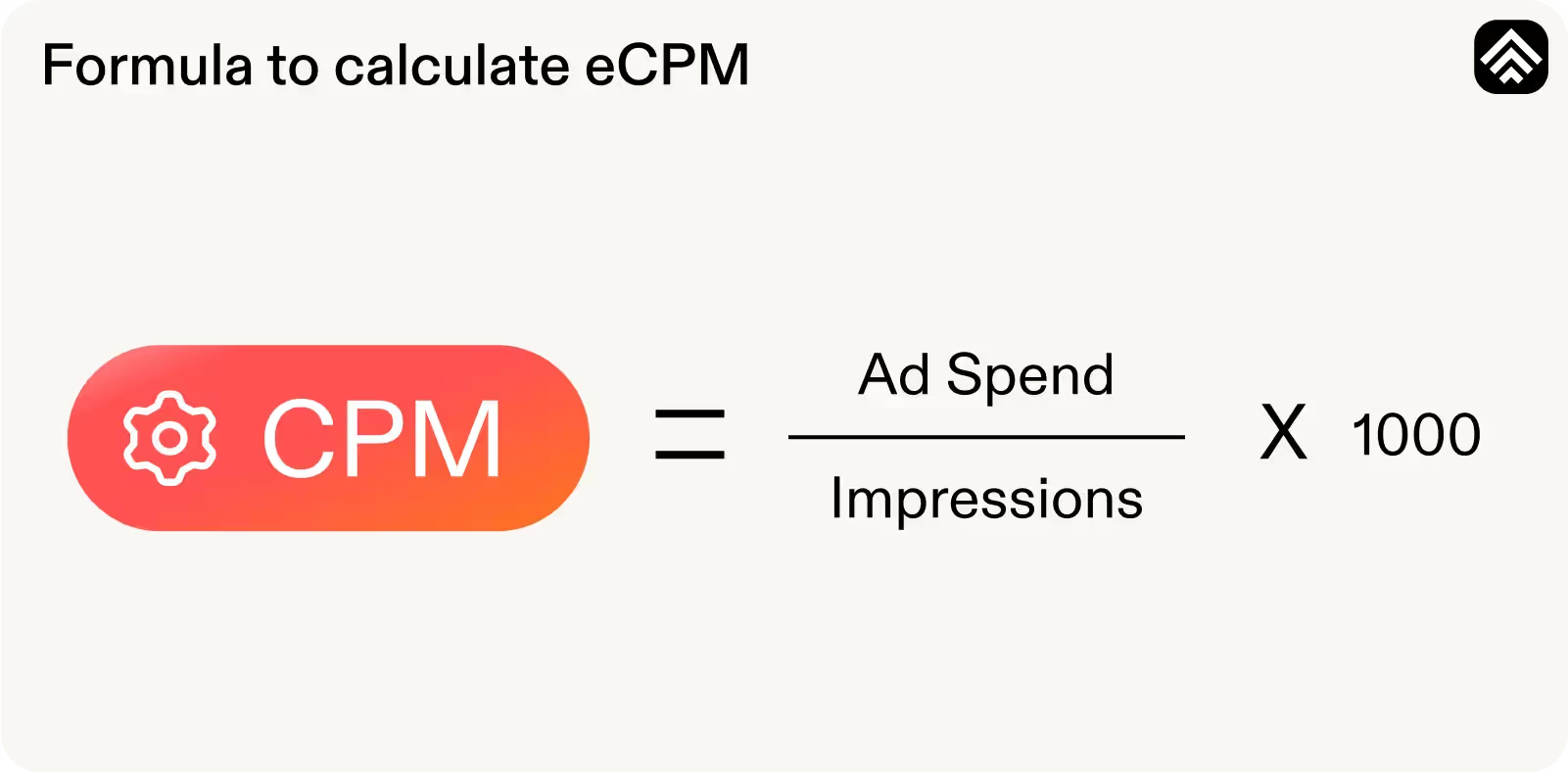CPM Calculator: Calculate Cost Per Mille in 3 Steps
Cost per mille (CPM) is an important metric publishers and advertisers use to plan their ad spends and anticipate expected revenues.
Cost per mille (CPM) is an important metric publishers and advertisers use to plan their ad spends and anticipate expected revenues. The Publift CPM calculator helps publishers estimate the potential revenue they could generate from their website traffic. It does this by taking into account a variety of factors that go into determining CPM, such such as website traffic, ad placement, and ad format, etc.
What Is Cost Per Mille (CPM)?
In online advertising, CPM is a metric that refers to the cost of showing an advertisement to 1,000 users. CPM stands for cost per mille where the letter "M" signifies "mille," a Latin term that means "thousands." It is often used as a benchmark to compare the cost-effectiveness of marketing campaigns and to calibrate advertising budgets.
Cost Per Mille or Cost Per Thousand (CPM) Formula
The CPM formula is as follows:
CPM = (Cost of the ad campaign / Total impressions) x 1,000
For example, let's say a company paid $10,000 for an online ad campaign that received 500,000 impressions. The CPM would be calculated as:
CPM = ($10,000 / 500,000) x 1,000
CPM = $20
So the cost per thousand impressions (CPM) for this ad campaign would be $20.

How to Calculate CPM Using the CPM Calculator?
To use Publift’s CPM calculator, follow these simple steps:
- Input the total cost of the advertising campaign that you want to evaluate.
- Input the total number of impressions or views that the advertising campaign generated.
- Click on the "calculate" button and the CPM calculator will provide you with the cost per thousand impressions for your advertising campaign.
What Is Considered a Good CPM?
CPM can vary based on the platform, industry, ad format, targeting options, and other factors. For example, the average CPM for Instagram ads is around $10.41, while the average CPM for Facebook ads in the US is around $11.32.
To arrive at a reasonable CPM pricing model, it's necessary to analyze previous campaigns, compare results with market averages, and assess how CPM affects return on investment (ROI). Ultimately, what's considered a good CPM rate will depend on your specific goals, budget, and the performance metrics you're tracking.
If you’re interested in partnering with ad networks that have a track record of delivering industry-leading CPMs within their respective niches, have a look at our curated list of the best high CPM ad networks for publishers.
Frequently Asked Questions
Why Is CPM Important?

CPM is important in digital advertising because it allows advertisers to plan their ad spend, strategize their marketing campaign, and manage the advertising budget more efficiently. It's also a useful metric for publishers who can use it to determine the value of their ad inventory and set competitive pricing. Publishers often have a target CPM that they aim to achieve and it is typically influenced by factors such as their audience demographics, the type of content,etc.
What Factors Affect Your CPM?

Here are some factors that can affect your CPM rate:
- Ad placement: Ads placed in high-visibility areas of a website or app, such as above the fold or in the header, typically command higher CPM rates.
- Ad format: Certain ad formats, such as video or native ads, may be more engaging to users and therefore command higher CPM rates.
- Seasonality: CPM rates may fluctuate based on seasonal factors, such as increased demand during holiday shopping periods.
- Ad blocker usage: If a significant portion of a website's audience uses ad blockers, the CPM rates may be lower.
- Target audience: A certain demographic or audience segment could be of greater value to advertisers, making them more willing to pay higher prices to target them.
What Is the Difference Between CPM and eCPM?

The difference between CPM and eCPM is that where CPM is an advertiser-centric metric, eCPM is a publisher metric. CPM measures the cost of 1,000 ad impressions to an advertiser, whereas eCPM measures the revenue generated for a publisher by 1,000 ad impressions.
Deep Dive into Programmatic Advertising

In this week's episode, we're taking a look at cars.com, one of the biggest auto marketplaces in the US. Ben and Brock speak about the detailed insights and suggestions for optimizing cars.com’s ad revenue.

We're delving deep into the world of AdSense arbitrage—a game-changing strategy where publishers invest in ads to drive traffic.
Ready to boost your ad revenue?
AdSense is a great starting point, but it’s just one demand partner. Find out how you can get more revenue from your site without impacting users with Publift’s programmatic advertising platform Fuse.
Fuse is also built for Independent Publishers looking to access more premium demand partners. Get even more competition for your ad inventory with access to over 25 premium demand partners. We’ll set you up with the best partners for your individual site, with personalised ad optimisations unique to your users and business model. Get access to all of your reporting in one place with our Fuse all-in-one automated reporting dashboard.
Boost your in-app ad revenue and grow your business with Fuse Apps by Publift. We’ll give you access to over 10 app advertising demand partners, and make sure you have the right ad formats to maximise your revenue without impacting user experience.






